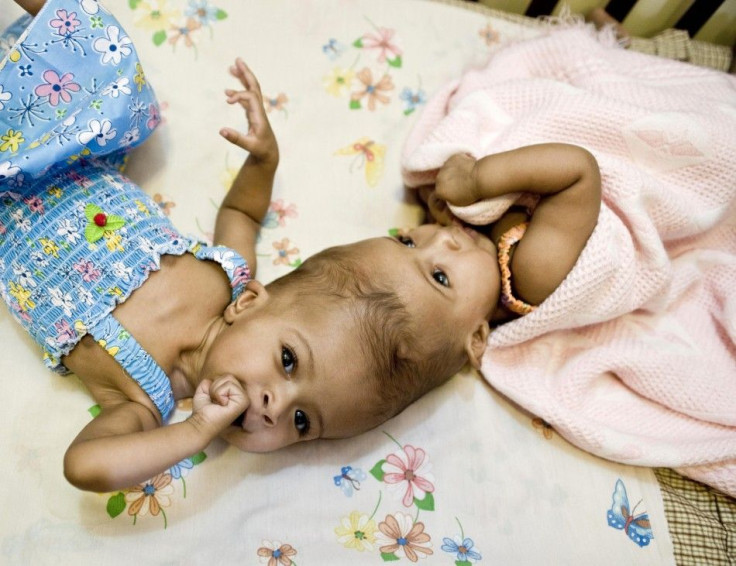Miracle Surgery Saves Conjoined Twins Attached at Head

One-year-old Sudanese twins Rital and Ritag Gaboura are both in excellent health and have been upgraded to the general ward at the UK hospital where the craniopagus conjoined twins underwent a months-long series of surgical procedures to separate them.
Facing the World, a British charity that helped fund the risky procedure, wrote on its Web site that the girls were interacting and playing as before, and that soon their parents will be able to fulfill their dream of taking home two healthy, separate daughters.
Rital and Ritag Gaboura were born in September 2010 as craniopagus twins -- a condition that occurs in about one in ten million births, according to BBC News. The odds of survival are slim from the start: Only 25% of craniopagus conjoined twins survive at all, with approximately 40% stillborn and a third who do not live past 24 hours.
I was preparing myself to live with conjoined twins twins forever, the girls' father, Abdelmageed Gaboura, told BBC News.
Nonetheless, Dr. Gaboura and his wife Enas approached Facing the World about the possibility of organizing and raising funds for a surgery that appeared to be neccessary to save Ritag's life: Though the twins were born with separate brains, Ritag was supporting the blood flow for both of them, and was exhibiting symptoms fo heart failure when the twins arrived at Great Ormond Street hospital.
Incidences of surviving twins with this condition is extremely rare, lead surgeon David Dunaway said in a statement released by Facing the World. The task presented innumerable challenges and we were all very aware of our responsibilities to the family and these two little girls.
Dunaway explained that the medical team chose to go with a series of smaller operations as opposed to one major one, to minimize the risks. One big operation risks the brain swelling and problems in reconstruction, he told BBC News, explaining that the same series of operations had been successful twice in the past. It's lots of simple steps, is any one step impossible? No. This is sure and steady, that's the elegance of the technique, he added.
The first operation separated the twins' blood flow, and that was followed by a procedure that used balloons to stretch and grown new skin on the twins' scalps. Three months after the initial surgical procedure, the twins underwent the 13-hour separation surgery on Aug. 15.
I can't say what a joy it's been for all of us. It is so hard to say what it feels like, Dunaway told BBC News. For them to survive this process, completely neurologically intact and to be a few weeks later smiling, developing, acting appropriately, has been wonderful for us.
We feel very lucky that our girls have been able to have the surgery that they needed, Mr. Gaboura told the Telegraph. But we also know of other children who need complete sponsorship and families who are searching for someone to help them.
The twins like to be close to each other most of the time, their father added.
© Copyright IBTimes 2024. All rights reserved.






















